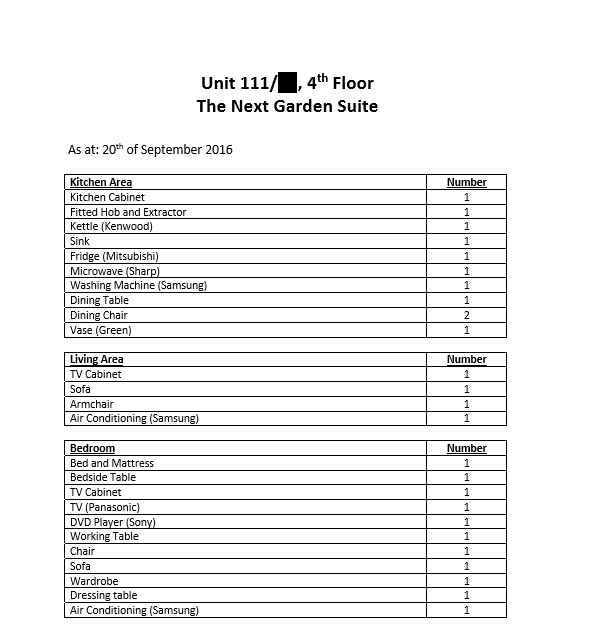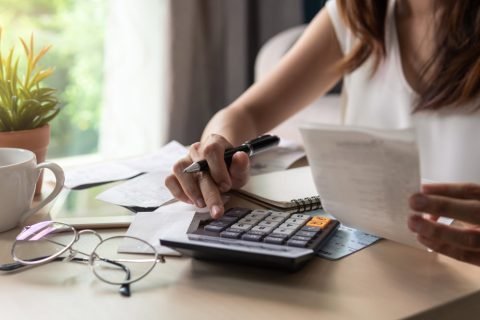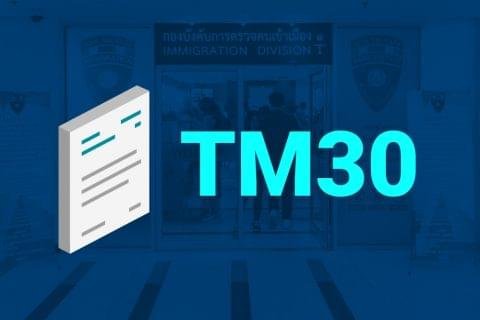
Provided a property is correctly prepared before the tenant moves-in, tenancies tend to be drama-free and relaxing affairs. In most cases monthly rent simply rolls into the landlord’s account and the tenant goes about his/her life peacefully enjoying the property.
However this carefree experience can quickly develop into a stressful situation upon checkout simply based on the simple principle:
“The Landlord wants to be compensated for all damages to furnishing and fittings upon the tenant moving-out.”
“Tenant’s feel they have not caused any damages beyond normal wear and tear and feel they need to be refunded their deposit in full”
All standard Lease Agreements in Bangkok prepared by professional Bangkok Property Agencies, clearly state:
1. Landlord can claim deductions from the Tenant’s Security Deposit, if damages beyond “ordinary wear and tear” have occurred.
2. Security Deposit is refundable between 15-30 Days (Depending on Lease Agreement)
The great thing is there is a simple way to avoid a messy and stressful checkout for all parties which is preparing an Inventory List and Supporting Photo Inventory!
Let’s dive into the basic contents and structure of an Inventory:
A basic inventory should look like this:

A Supporting Photo Inventory like this:

Starting with an analysis of the Inventory/Checkout Checklist:
– Ensure the Inventory List clearly states the date and place the document was created.
– All major furnishing and fittings should be listed giving details on the number of items provided (I.e. Dining Chairs X 4) and/or the Brand of the item if it is an electronic appliance (I.e. Samsung TV). If an electronic item is valuable, the inventory can also state the reference/serial number of the device.
– A well-structured Inventory also organizes the furnishing and fixtures according to their position in the property. (I.e. Living Room, Kitchen, Master Bedroom).
– Minor decorations and accessories tend to be left out for the sake of simplicity.
If that decorative piece is valuable, this can be included in the Inventory List.
Things to look out for in a Supporting Photo Inventory:
– A simple list of the furnishing and fittings in the property gives no indication of general conditions of the items. So a Photo Inventory is a great way to compare the condition of an item “before check-in and after check-out”.
– Individual Photos of Items allows a more thorough and fair check-out inspection.
Upon move-out usually the Property Agent or Landlord will conduct an inspection using the Inventory Documents as a guideline. To ensure deductions are conducted fairly and “costs” are not plucked out of thin air, Landlords tend to state damaged areas and ask a relevant technician or handyman to evaluate the cost of repair. Invoices or Quotes are then relayed to the Tenant to accept. The outstanding amount after deductions is then refunded to the Tenant (As per the Lease Agreement, this process usually takes between 15-30 Days).
If all the guidelines above are followed and enforced, the check-out process and negotiation of deductions can be smoother and fairer for all the parties involved.





Montetro says:
Sustain the incredible work !!
David says:
Hi. Can I ask your advice. I run a successful Inventory company in the UK. Thinking about moving to Thailand and starting a Inventory company there. Are all tenancies required to have a Inventory at the start and a checkout at the end in Thailand. What is the setup there. Thinking about Chaing Mai. Thanks for any advice.
Fresh Editorial says:
Yes, they are usually a standard but not compulsory.
I think usually the Agencies will draft the Inventory themselves (To save on expenses).
Thanks,
Fresh Property Team